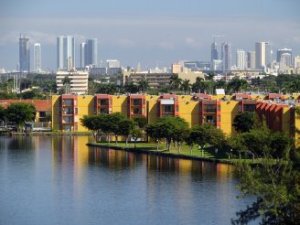Today, Delaware Governor Jack Markell and Secretary of State Jeffrey Bullock welcomed a record 17 companies to register as Delaware benefit corporations on the statute’s first effective date.
Registering companies include popular home goods brand Method Products, fastest-growing organic baby food brand Plum Organics, innovative paper company New Leaf Paper, leading fair trade food business Alter Eco and Farmigo, the world’s first online personal delivery farmer’s market. Venture capital investors, corporate investors and parent companies of these businesses include San Francisco Equity Partners and European eco-leader Ecover (Method), American icon Campbell Soup Company (Plum), Benchmark Capital and RSF Social Finance (Farmigo), Pacific Community Investors (New Leaf Paper) and Good Capital (Alter Eco).
“Benefit corporations meet a market need and a societal need,” said Governor Jack Markell. “They have the potential to create high quality jobs and improve the quality of life in our communities.”
“B Corp re-imagines corporate governance in a way that drives value creation for all and creates lasting companies,” said Michael Eisenberg of Benchmark Capital.
Delaware is the 19th state (plus the District of Columbia) to enact benefit corporation legislation, but as legal home of most venture-backed businesses, the majority of publicly-traded companies, and nearly two-thirds of the Fortune 500, it is the most important state for businesses that seek access to venture capital, private equity and public capital markets. Current Delaware law requires corporations to prioritize the financial interests of shareholders over the interests of workers, communities and the environment. Benefit corporations enjoy legal protection to create value for society, not just for shareholders, while meeting higher standards of accountability and transparency.
“Part of Method’s mission is to show that business can be a force for social and environmental good. Delaware benefit corporation law enables responsible businesses like Method to practice a more enlightened form of corporate governance that includes not only financial objectives, but social and environmental objectives,” said Adam Lowry, Co-Founder and Chief Greenskeeper of Method Products.
“Adopting this legislation is a natural extension of how we do business at Plum,” said Neil Grimmer Co-founder & President of Plum Organics. “We are committed to providing little ones with the very best food from the very first bite, and a publicly stated benefit recommits us to that core value. We are honored to be among the first to reincorporate as a benefit corporation, and hope today will set the stage for many like-minded companies to join us.”
In recognition of what members of the Delaware Bar have called a “seismic shift in corporate law,” more than 600 business leaders from the community of B Corps have signed an Open Letter inviting their colleagues to join them in redefining success in business. Signatories include well-known businesses like Patagonia and Ben & Jerry’s and high growth businesses like online marketplace Etsy and eyewear company Warby Parker; the Open Letter to Business Leaders can be read at www.bcorporation.net/open-letter-to-business-leaders.
Benefit corporations are a new kind of corporation legally required to: 1) have a corporate purpose to create a material positive impact on society and the environment; 2) expand fiduciary duty to require consideration of the interests of workers, community and the environment; and 3) publicly report annually on its overall social and environmental performance using a comprehensive, credible, independent and transparent third party standard. Delaware’s statute does not require use of a third party standard and only requires reporting to shareholders, not to the general public.
Four other companies, SustainAbility, Honest Company, GOOD Inc. and Performance Management Institute, have also committed to registering as benefit corporations in the coming year.
“With the passage of Delaware Benefit Corporation legislation, the path is now clear to scale business as a force for good,” said Andrew Kassoy, B Lab Co Founder. “It’s great to see venture capital and corporate investors taking advantage of this new tool to scale mission driven businesses on the very first day.”
To learn more about United States Carbon and our energy reduction technology that will help you become greener, cleaner, and more socially responsible please contact us at (855) 393-7555 or visit our website: www.unitedstatescarbon.com
Related articles
- Delaware Joins States with Public Benefit Corporations (lawprofessors.typepad.com)
- Delaware Just Made It A Whole Lot Easier For Socially Responsible Companies To Exist (fastcoexist.com)
- Why Delaware’s New Corporate Structure Appeals to Method (origin-www.businessweek.com)
- Delaware Adopts Public Benefit Corporation Status (theracetothebottom.org)





